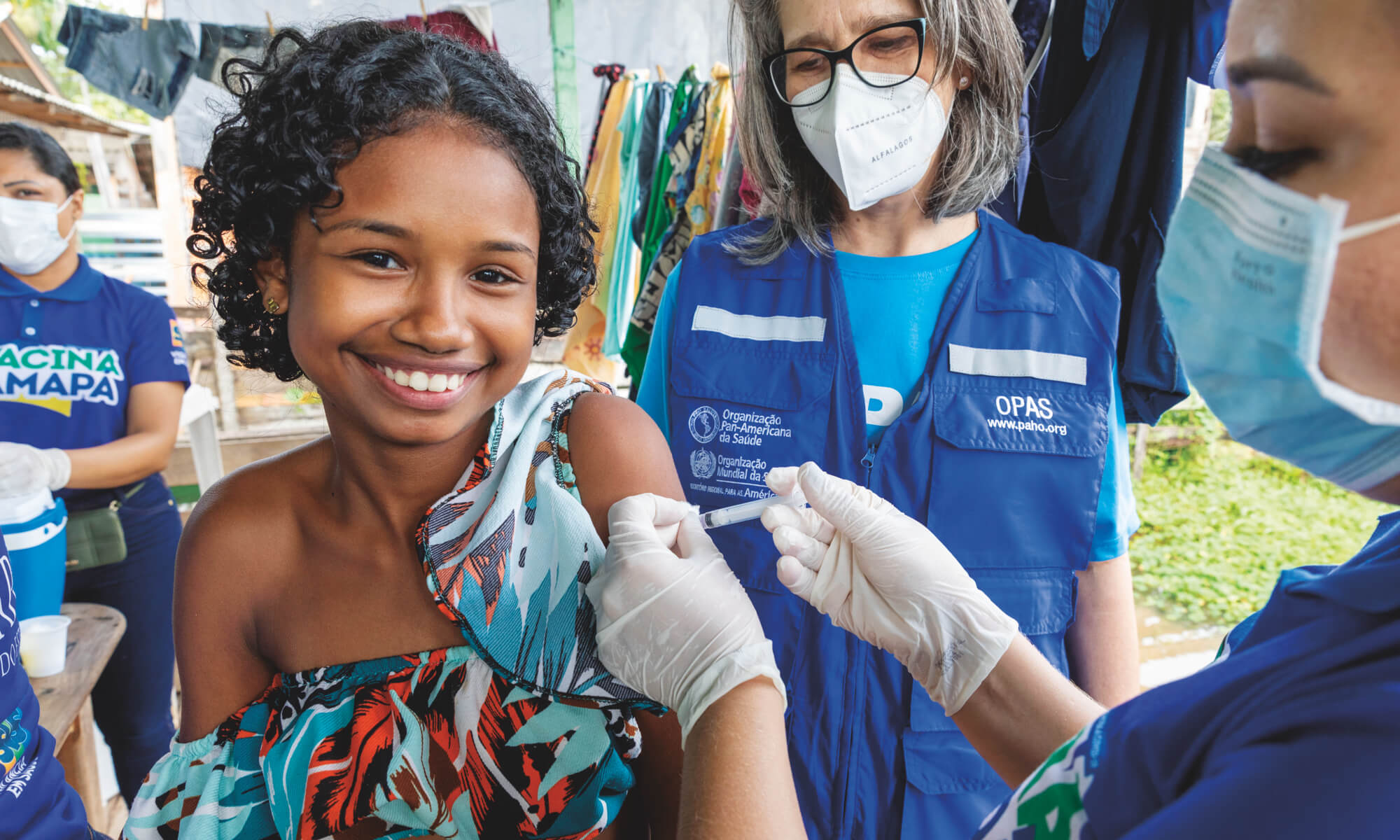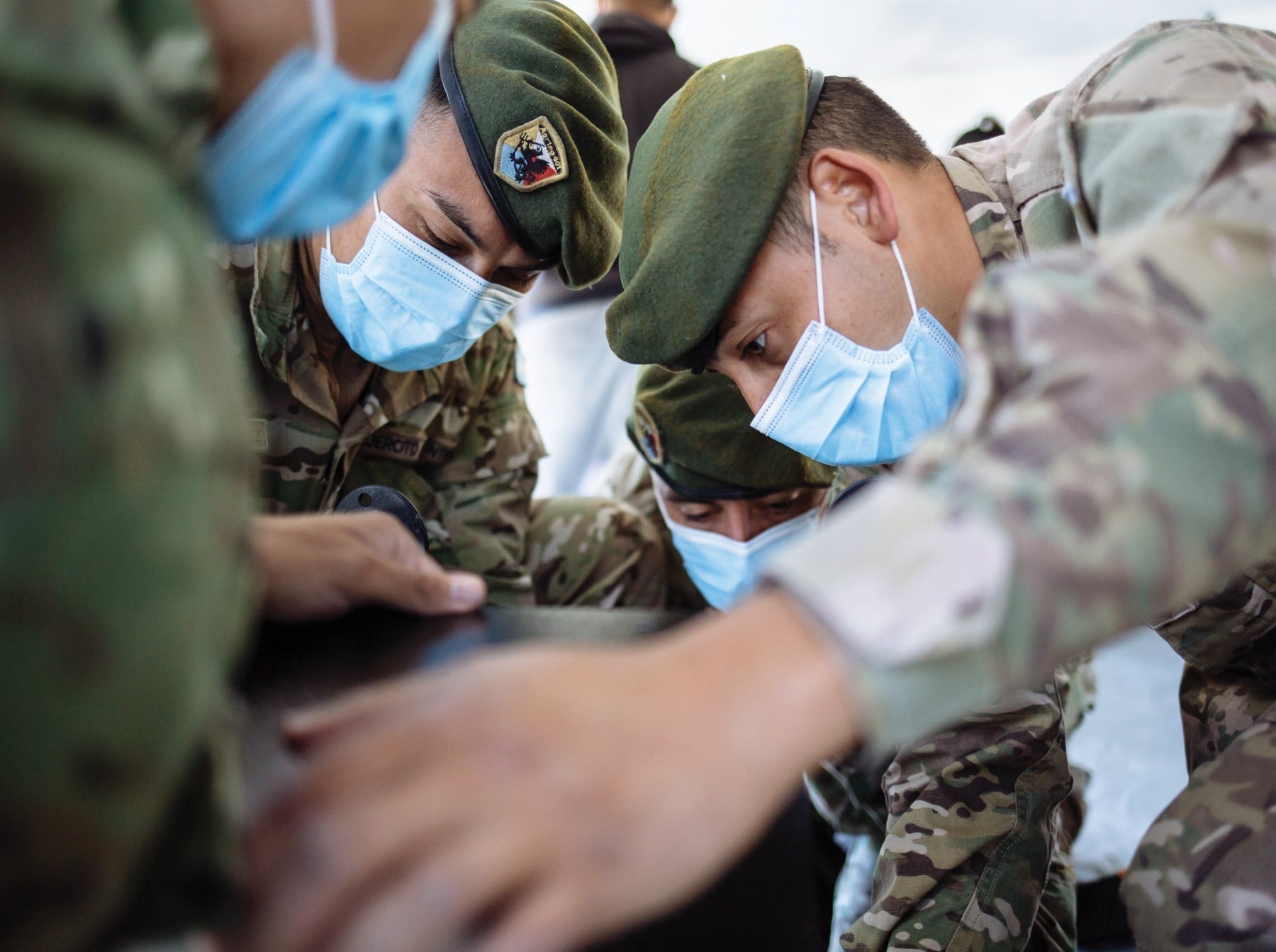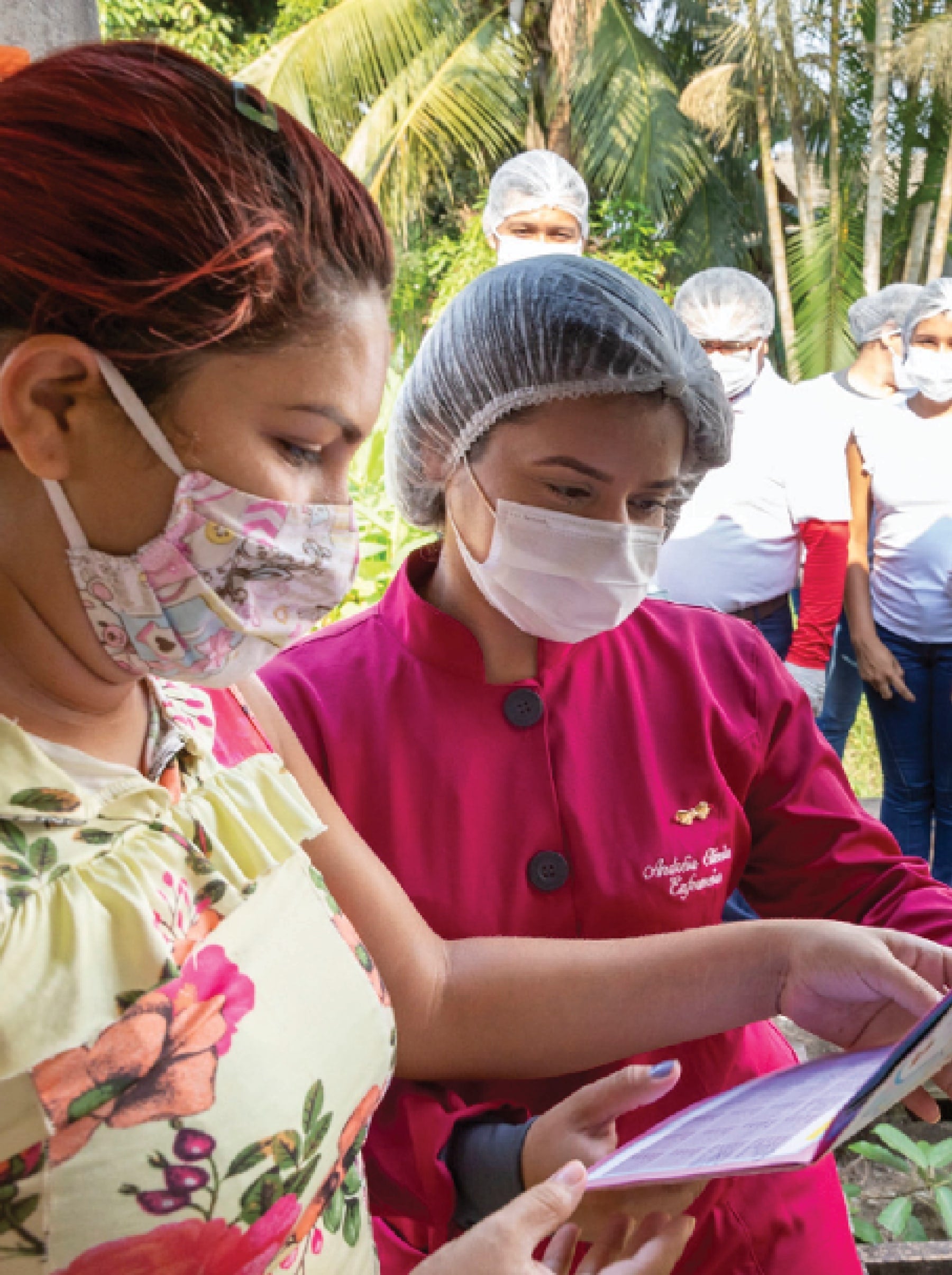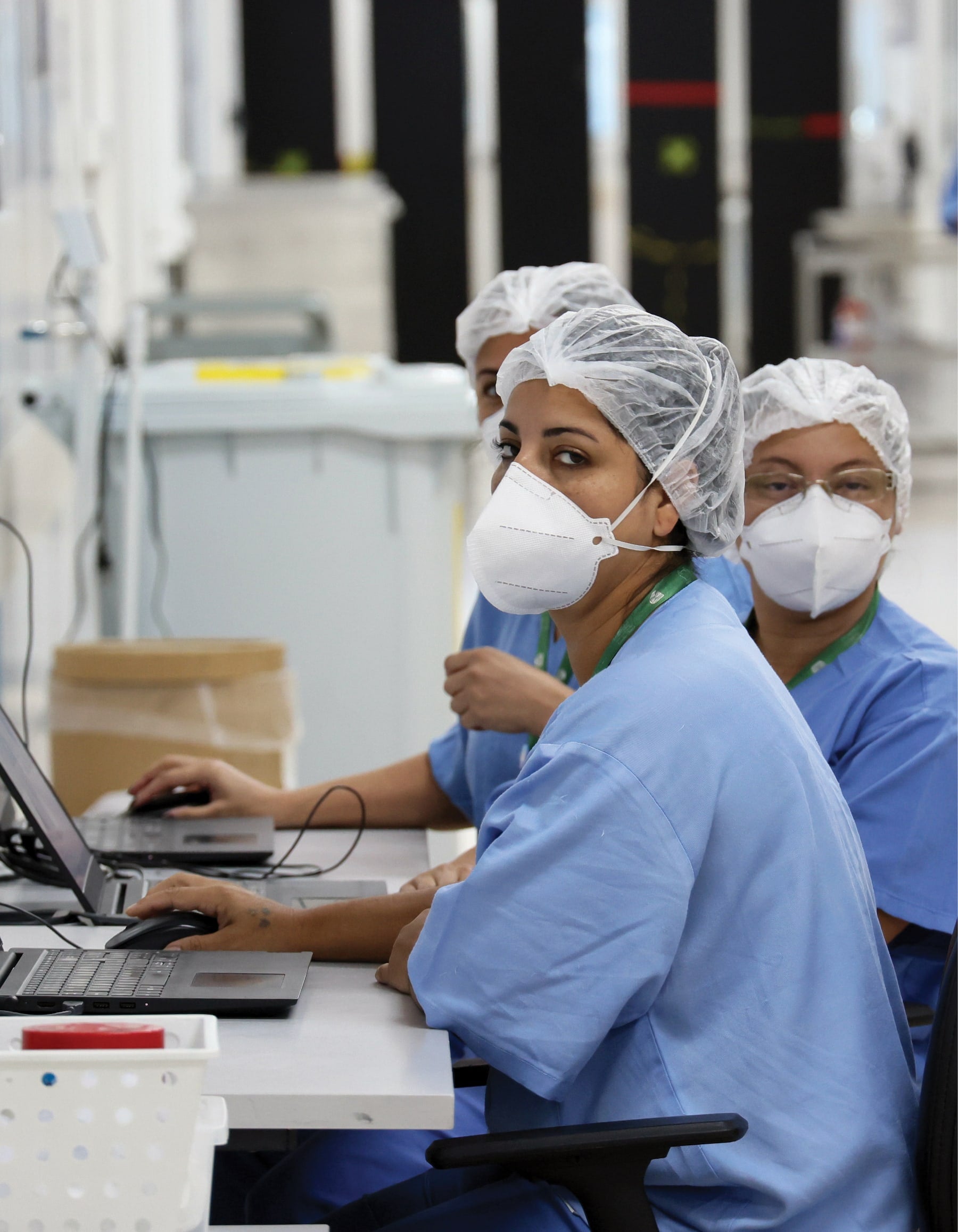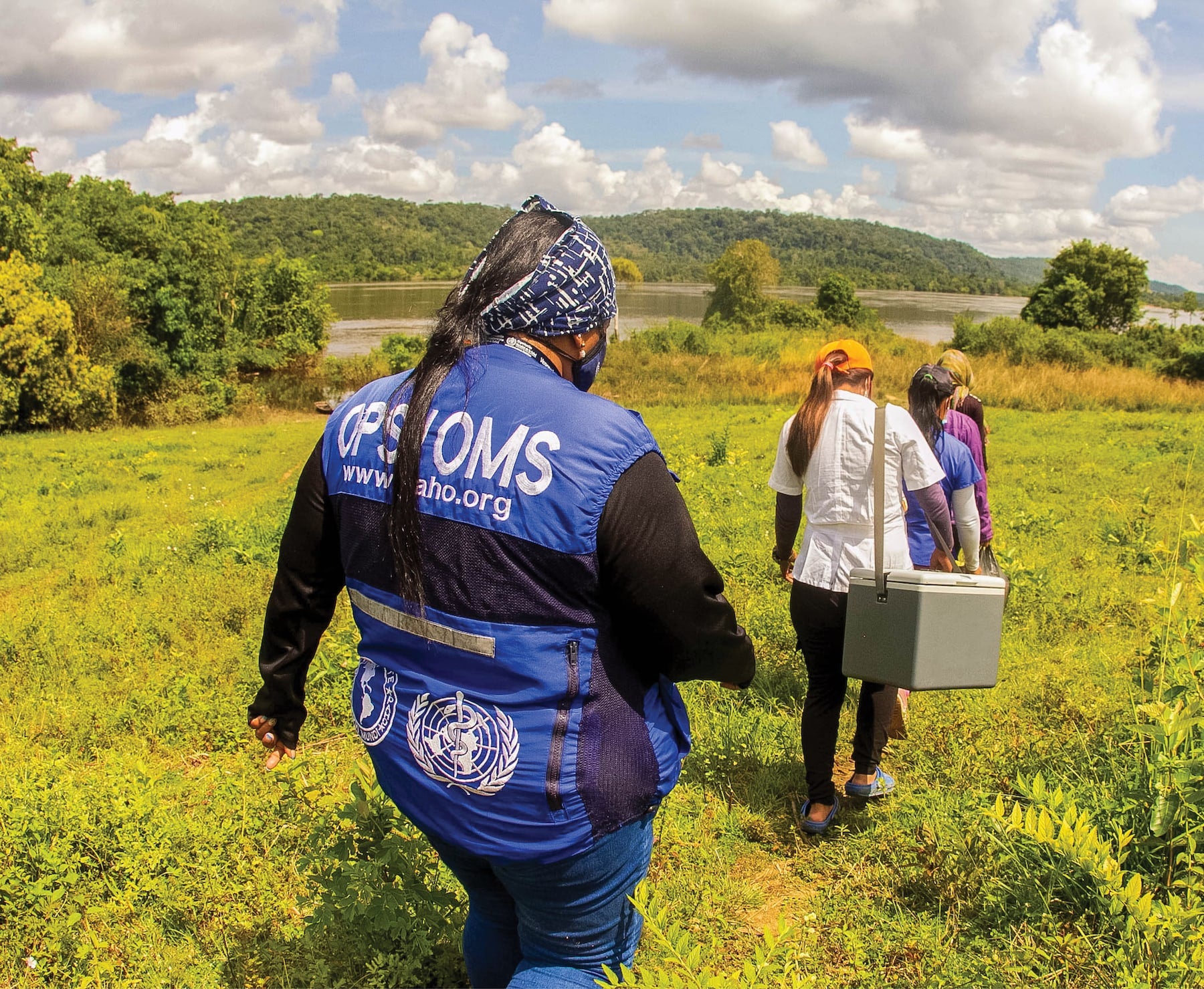On 20 January 2020, the first regional case of COVID‑19 was confirmed in the United States. The outbreak spread quickly to Latin America, with the first case recorded in Brazil on 26 February 2020. What followed was a pandemic that engulfed the world, shutting borders, dividing families, crippling economies, and endangering social cohesion. Three years later, as of March 2023, the Region of the Americas alone had reported over 190.3 million cases (25% of the global total) and over 2.9 million deaths (almost 43% of the global total).
The global response saw key economies cooperating to meet the challenge of developing vaccines at production speeds and scales not witnessed before. For the Americas, the financial support of the US Government has been immensely significant. The exceptional allocation of US$ 75 million to PAHO has enabled the Organization to play a leading role in tackling the pandemic and helping to improve the lives of those affected in the Region. Today, COVID‑19 incidence rates are 20 to 30 times lower than a year ago, thanks in large part to the combined efforts of partners such as the US Government, which have worked tirelessly to mount a coordinated, focused, and effective response.
This summary report demonstrates the breadth and scale of PAHO’s achievements under the COVID‑19 response. We are particularly proud of being able to help Latin American and Caribbean countries to administer more than 1.3 billion vaccine doses in less than two years, between March 2021 and December 2022, with the support of US Government funds. This accomplishment put the Region of the Americas second highest in the world for COVID‑19 vaccination coverage, at 71%.
Although the pandemic is waning in severity, COVID‑19 is still with us. The risk of infection peaks caused by new variants is real. We must maintain regular monitoring and reporting to ensure that future waves of infection do not catch us unprepared, and we continue to implement COVID‑19 vaccination programs, reaching out to the 30% who have yet to receive their primary series.
The US Government funds have enabled PAHO to support Member States to better implement their response plans to contain the COVID‑19 emergency. Our job now is to focus on recovering losses and rebuilding resilient health systems that work for everyone, as well as being better prepared for future health threats. To implement this vision, in my first year as PAHO Director, I have committed to focus on five strategic pillars to support PAHO’s Member States into their post-COVID recoveries. The first pillar is a definitive commitment to end the pandemic. The second pillar is a push to apply lessons learned and actively address our vulnerabilities. The third pillar is to ensure timely and equitable access to health innovations, which have played a crucial part in controlling the pandemic. The fourth pillar is to build resilient national health systems based on renewed primary health care. Finally, the fifth pillar is a pledge to strengthen PAHO’s capacity to support Member States to achieve the goals they tell us are their priorities.
My vision for the future of PAHO is to make it the leading organization supporting the countries of the Americas to improve the health and well-being of their populations. I am convinced that, working together with Member States, and with the incredibly valuable support of our US Government partners, PAHO will help countries recover from the pandemic to become stronger and more resilient than ever before as we work together to achieve Health for All.
Jarbas Barbosa da Silva Jr.
Director, Pan American Health Organization
